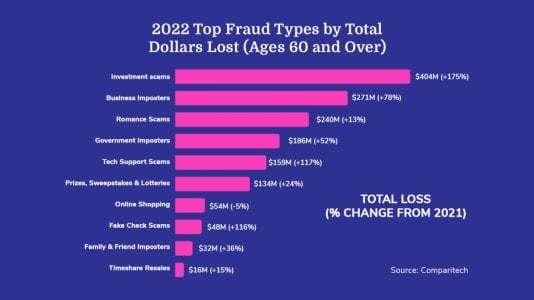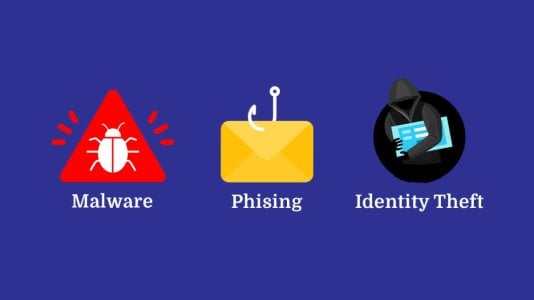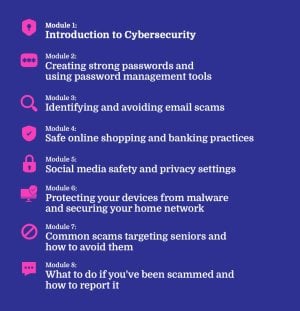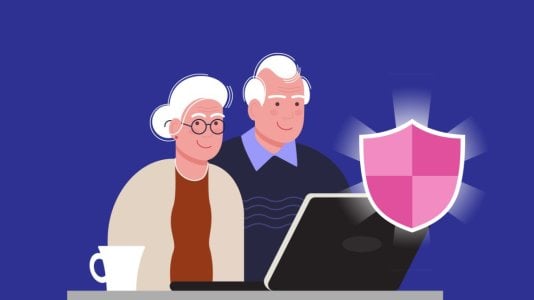Cybersecurity for Aussies Over 60: Module 1
- Replies 43
The Importance of Online Safety for Seniors
In today's digital age, the internet has become an essential part of our daily lives. We use it to stay connected with loved ones, shop, bank, and access information. However, as we spend more time online, we also become more vulnerable to cyber threats.
Don't forget to scroll down and complete this module's quiz when you're ready!
As seniors, we may be especially targeted by cybercriminals who believe we are less tech-savvy and more trusting. Studies show that seniors lose billions of dollars each year to online scams and fraud.
But don't let this discourage you from using the internet! By learning about common cyber threats and how to protect yourself, you can enjoy the benefits of the digital world while staying safe and secure. That's exactly what this course is designed to help you do.
Understanding Common Cyber Threats
Before we dive into specific strategies for staying safe online, let's take a closer look at some of the most common cyber threats you should be aware of:
1. Malware: Short for "malicious software," malware refers to any program designed to harm your computer or steal your personal information. This can include viruses, spyware, and ransomware.
2. Phishing: Phishing is when a scammer tries to trick you into giving away sensitive information, like your passwords or credit card numbers, by posing as a trustworthy entity. They may send you an email that looks like it's from your bank or a well-known company, asking you to click on a link and enter your information.
3. Identity Theft: This is when a criminal gains access to your personal information, such as your passport or bank account details, and uses it to make purchases, open new accounts, or commit other types of fraud in your name.
Throughout this course, we'll learn more about each of these threats and, more importantly, how to protect yourself against them.
Course Structure and Learning Objectives
This course is divided into eight modules, each focusing on a different aspect of cybersecurity and scam prevention. Here's a brief overview of what you'll learn:
By the end of the course, you'll have a comprehensive understanding of online security best practices and feel empowered to protect yourself and your loved ones from cyber threats.
Each module includes a mix of videos, text, and images to help you understand the concepts and apply them in your daily life. We'll also provide practical examples, case studies, and tips you can easily implement. At the end of each module, there will be a short multiple-choice test to reinforce your learning and ensure you're mastering the material.
Remember, cybersecurity is an ongoing process. As technology evolves, so do the tactics of cybercriminals. But by staying informed and vigilant, you can significantly reduce your risk of falling victim to online scams and fraud. So, let's get started on this journey towards a safer online experience!
Continue to Module 2
Modules 2-8 are exclusively for SDC Rewards members. Upgrade to continue.
In today's digital age, the internet has become an essential part of our daily lives. We use it to stay connected with loved ones, shop, bank, and access information. However, as we spend more time online, we also become more vulnerable to cyber threats.
Don't forget to scroll down and complete this module's quiz when you're ready!
As seniors, we may be especially targeted by cybercriminals who believe we are less tech-savvy and more trusting. Studies show that seniors lose billions of dollars each year to online scams and fraud.
But don't let this discourage you from using the internet! By learning about common cyber threats and how to protect yourself, you can enjoy the benefits of the digital world while staying safe and secure. That's exactly what this course is designed to help you do.
Understanding Common Cyber Threats
Before we dive into specific strategies for staying safe online, let's take a closer look at some of the most common cyber threats you should be aware of:
1. Malware: Short for "malicious software," malware refers to any program designed to harm your computer or steal your personal information. This can include viruses, spyware, and ransomware.
2. Phishing: Phishing is when a scammer tries to trick you into giving away sensitive information, like your passwords or credit card numbers, by posing as a trustworthy entity. They may send you an email that looks like it's from your bank or a well-known company, asking you to click on a link and enter your information.
3. Identity Theft: This is when a criminal gains access to your personal information, such as your passport or bank account details, and uses it to make purchases, open new accounts, or commit other types of fraud in your name.
Throughout this course, we'll learn more about each of these threats and, more importantly, how to protect yourself against them.
Course Structure and Learning Objectives
This course is divided into eight modules, each focusing on a different aspect of cybersecurity and scam prevention. Here's a brief overview of what you'll learn:
- Module 1: Introduction to Cybersecurity (you are here!)
- Module 2: Creating strong passwords and using password management tools
- Module 3: Identifying and avoiding email scams
- Module 4: Safe online shopping and banking practices
- Module 5: Social media safety and privacy settings
- Module 6: Protecting your devices from malware and securing your home network
- Module 7: Common scams targeting seniors and how to avoid them
- Module 8: What to do if you've been scammed and how to report it
By the end of the course, you'll have a comprehensive understanding of online security best practices and feel empowered to protect yourself and your loved ones from cyber threats.
Each module includes a mix of videos, text, and images to help you understand the concepts and apply them in your daily life. We'll also provide practical examples, case studies, and tips you can easily implement. At the end of each module, there will be a short multiple-choice test to reinforce your learning and ensure you're mastering the material.
Remember, cybersecurity is an ongoing process. As technology evolves, so do the tactics of cybercriminals. But by staying informed and vigilant, you can significantly reduce your risk of falling victim to online scams and fraud. So, let's get started on this journey towards a safer online experience!
Question 1 of 5
What is the primary goal of this cybersecurity course?
Which of the following is an example of malware?
What is phishing?
Which of the following is an example of identity theft?
How many modules are included in this cybersecurity course?
You got 0 answers correct
Continue to Module 2
Modules 2-8 are exclusively for SDC Rewards members. Upgrade to continue.
Last edited by a moderator:












